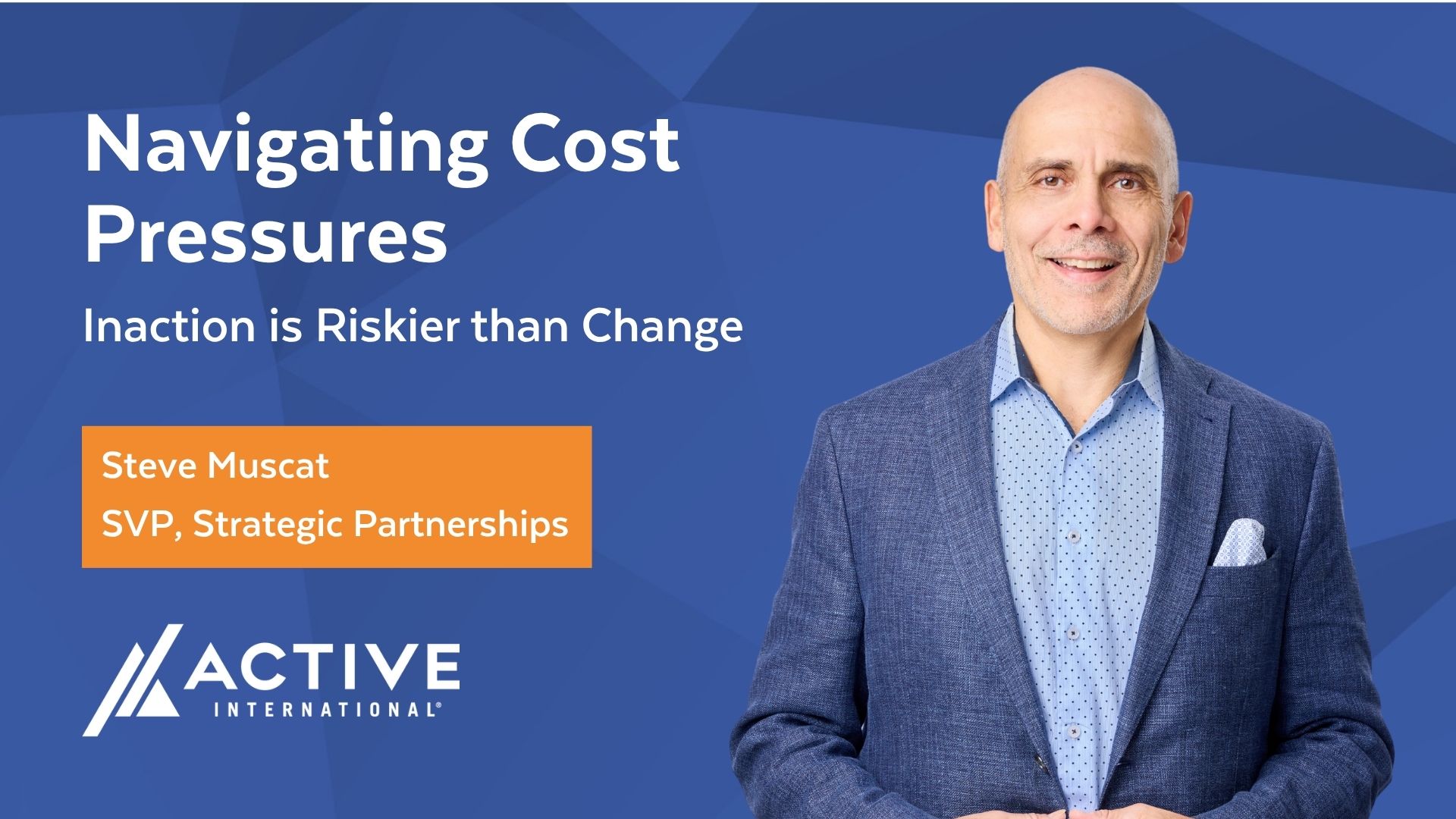Active International and the Canadian Marketing Association hosted an exclusive gathering of senior marketers to discuss tariffs, branding and what it means to be Canadian. In our round table, we were joined by Marina Baric (Former VP Marketing, Ex-Osmow’s), Irene Daley (VP Marketing, Canadian Tire), Idan Driman (VP Marketing, Pet Valu), Adrian Fuoco (CMO, Pizza Pizza), Glenn Martin (President, Stratagem), Mark Wakefield (Former EVP Marketing, Ex-Ferrero) and Indresh Kohli (Dr. Oetker) as a contributor.
During our discussion, it was clear that cost pressures were at the top of everyone’s mind. There is no shortage of complexity, from currency devaluation and transportation costs to shifting supplier contracts and margin compression. But the consensus was this: inaction is riskier than change.
______________________________________________________________________________________
The Many Faces of Cost Pressure
Sometimes cost pressure appears in the form of a recession, like in 2008. Sometimes it is due to a global pandemic, with strains on an established, efficient supply chain, like COVID-19. In 2025, marketers must stickhandle reduced budgets due to uncertainty, while maintain brand building and short-term performance initiatives. This time is different, however. A perfect storm if you will, including any number of variables such as enhanced cost of production as tariffs pose risk to supply chain (moving from efficient to resilient possibly), cut back on discretionary spending as potential recession looms, brand loyalty weakening as consumers look to stretch their budget and national pride drive with consumers seeking out Canadian made.
We discussed lessons learned from Kellogg’s and Post during the challenging Great Depression, Post had a typical response, cutting back on expenses and advertising which eventually lead to a decline in sales. In contrast, Kellogg’s doubled its advertising budget and aggressively promoted its new cereal, Rice Krispies. This fresh approach showed consumers that Kellogg’s was there with them through tough times and helped them maintain and even increase market share despite economic turmoil. This branding investment resulted in Kellogg’s profits rising to 30%, establishing them as a dominant player in the cereal industry.
A Strategic Response
Rather than respond with broad price hikes or media cuts, many brands are taking a more measured approach, including revisiting pricing models, reprioritizing high-margin products, leveraging more efficient media investments, and negotiating directly with suppliers and franchisees to share the load.
One company shared how its manufacturing footprint helped buffer global supply shocks. By sourcing locally and investing in domestic production capabilities, it maintained consistency in both quality and supply, while reinforcing its commitment to supporting Canadian agriculture.
The group shared examples of how flexibility in creative execution allowed them to pivot campaigns quickly to stay relevant while still managing cost. Others emphasized the need to “stimulate value” in consumers’ minds by enhancing the brand experience or providing more tangible benefits, not just promotional pricing.
Marketing’s Moment
This moment is testing marketing’s ability to lead, not just to respond. But again, adversity is nothing new to marketers.
As the world gets more complex and media becomes more fragmented, how can brands stay meaningful through a strong value story to survive? Remember those brands that stuck with you in 2020/21? What did they do that resonated with you? Companies that maintained or increased brand visibility during the pandemic are applying similar lessons now: staying visible and intentional, even during uncertainty, drives long-term gains.
Let’s keep the dialogue going! Would love to hear how you are navigating cost pressures in these very interesting times.



